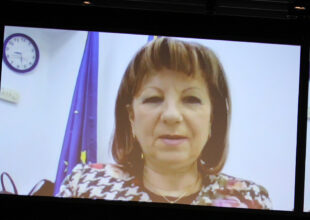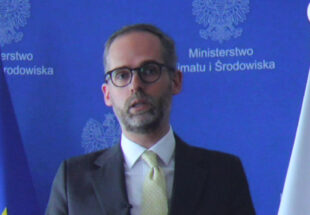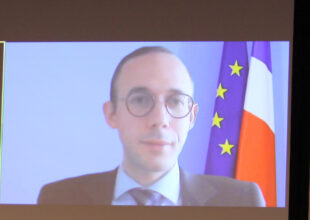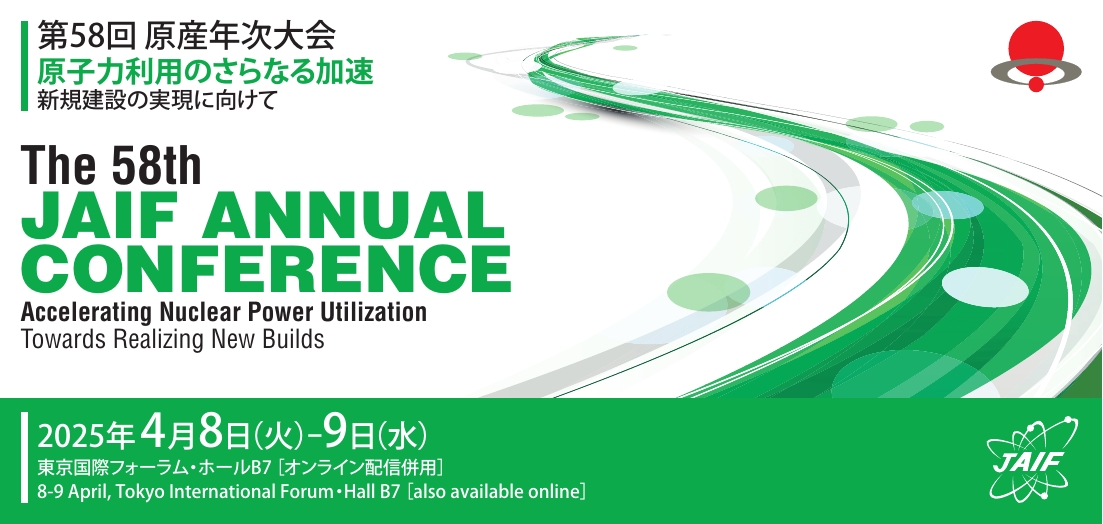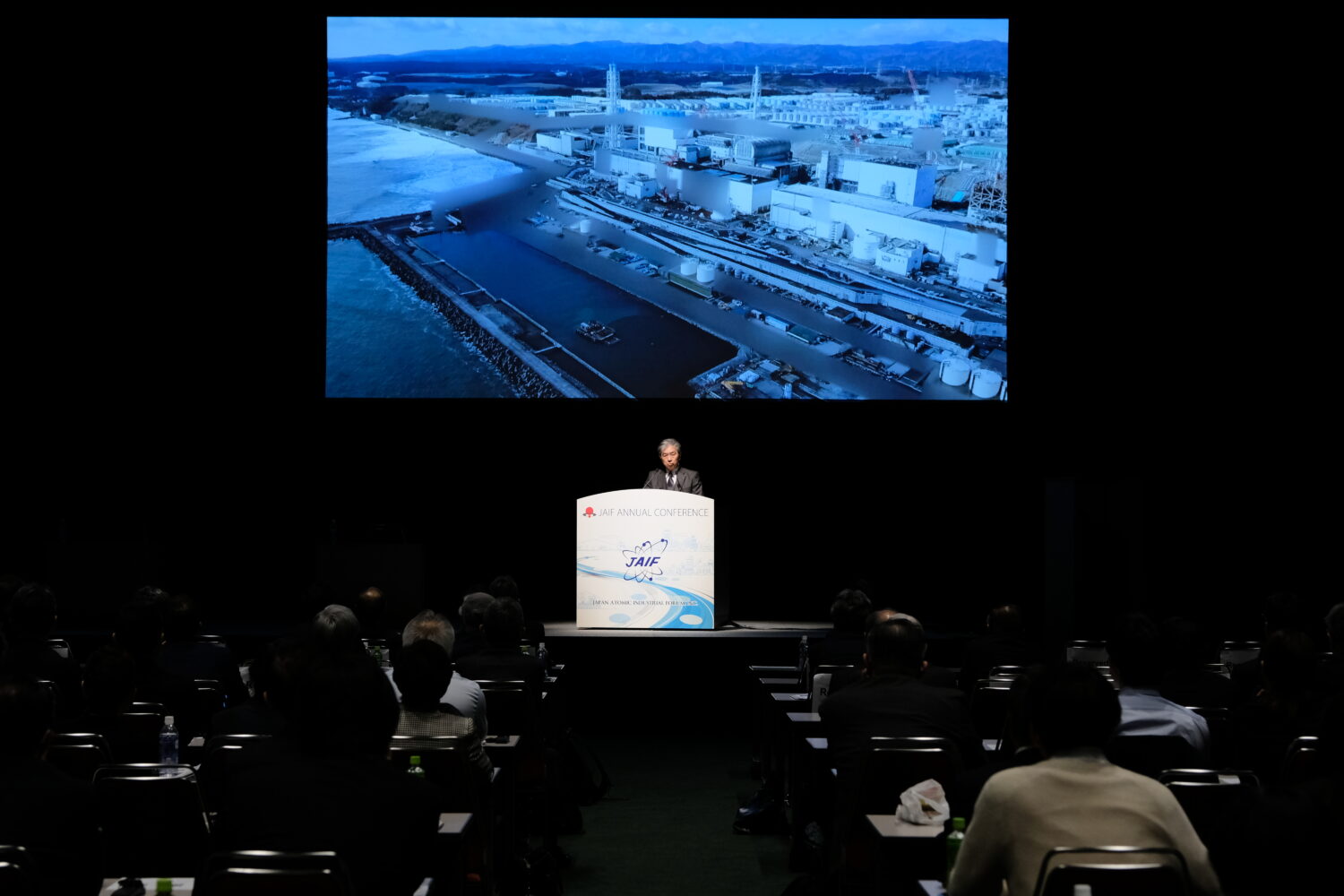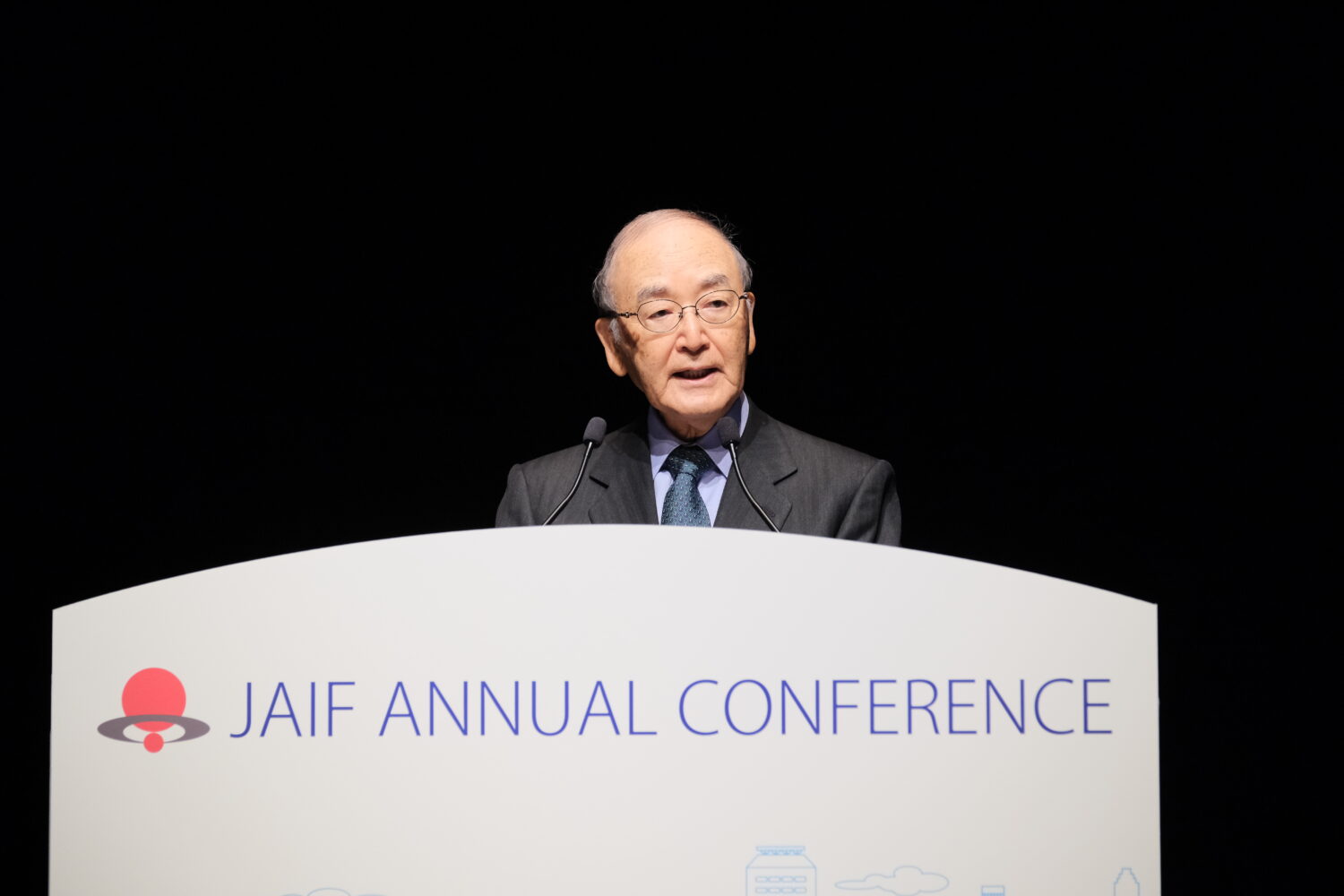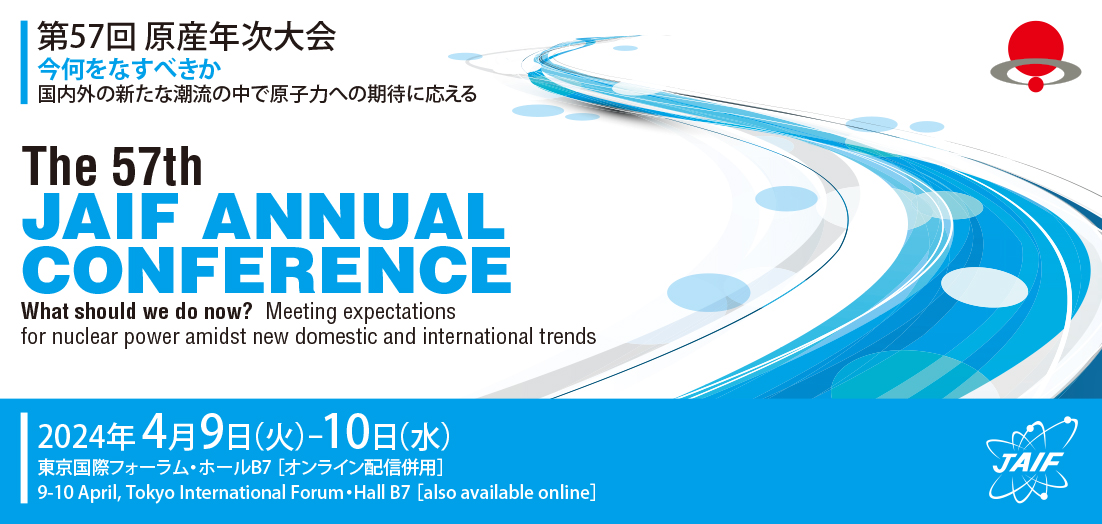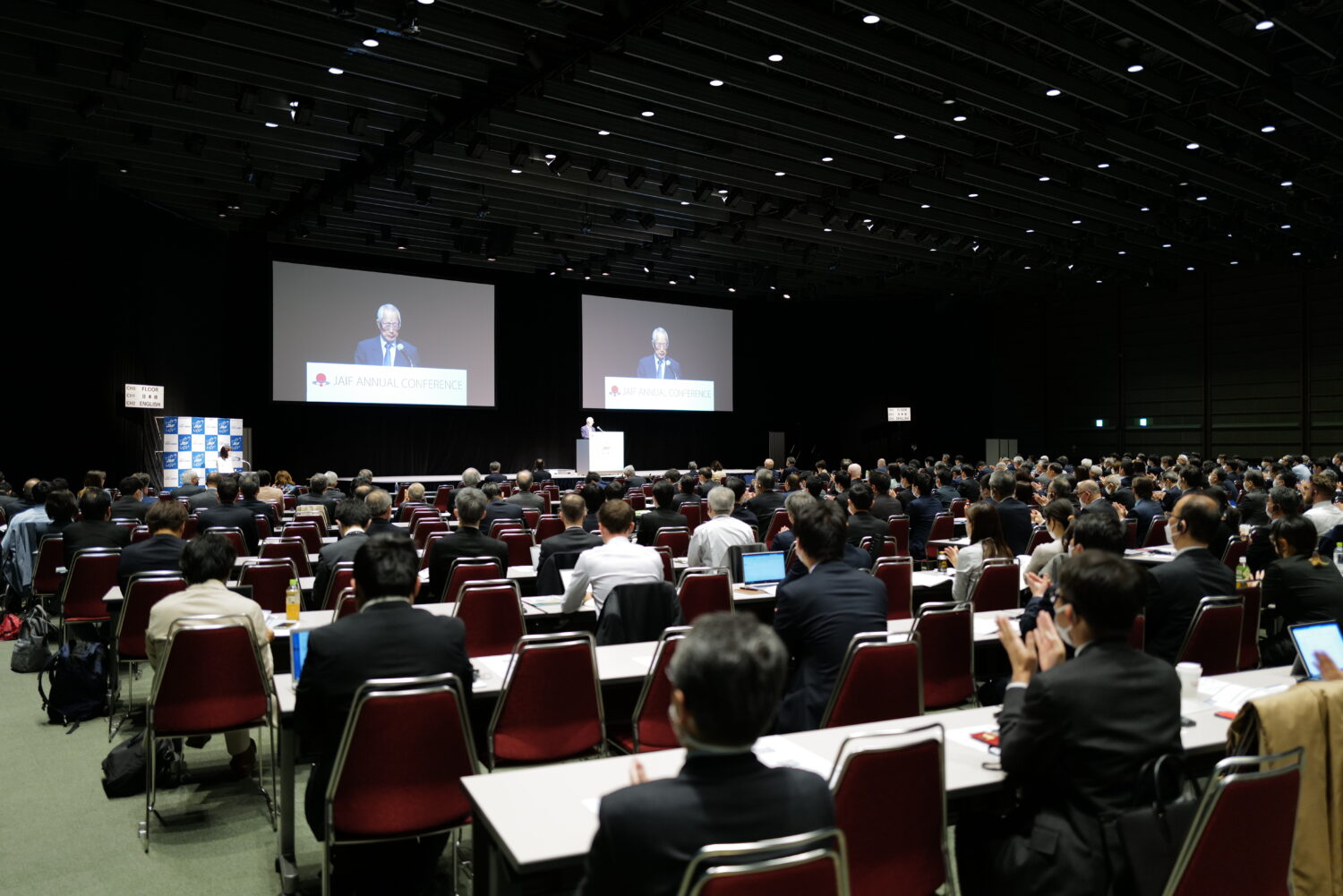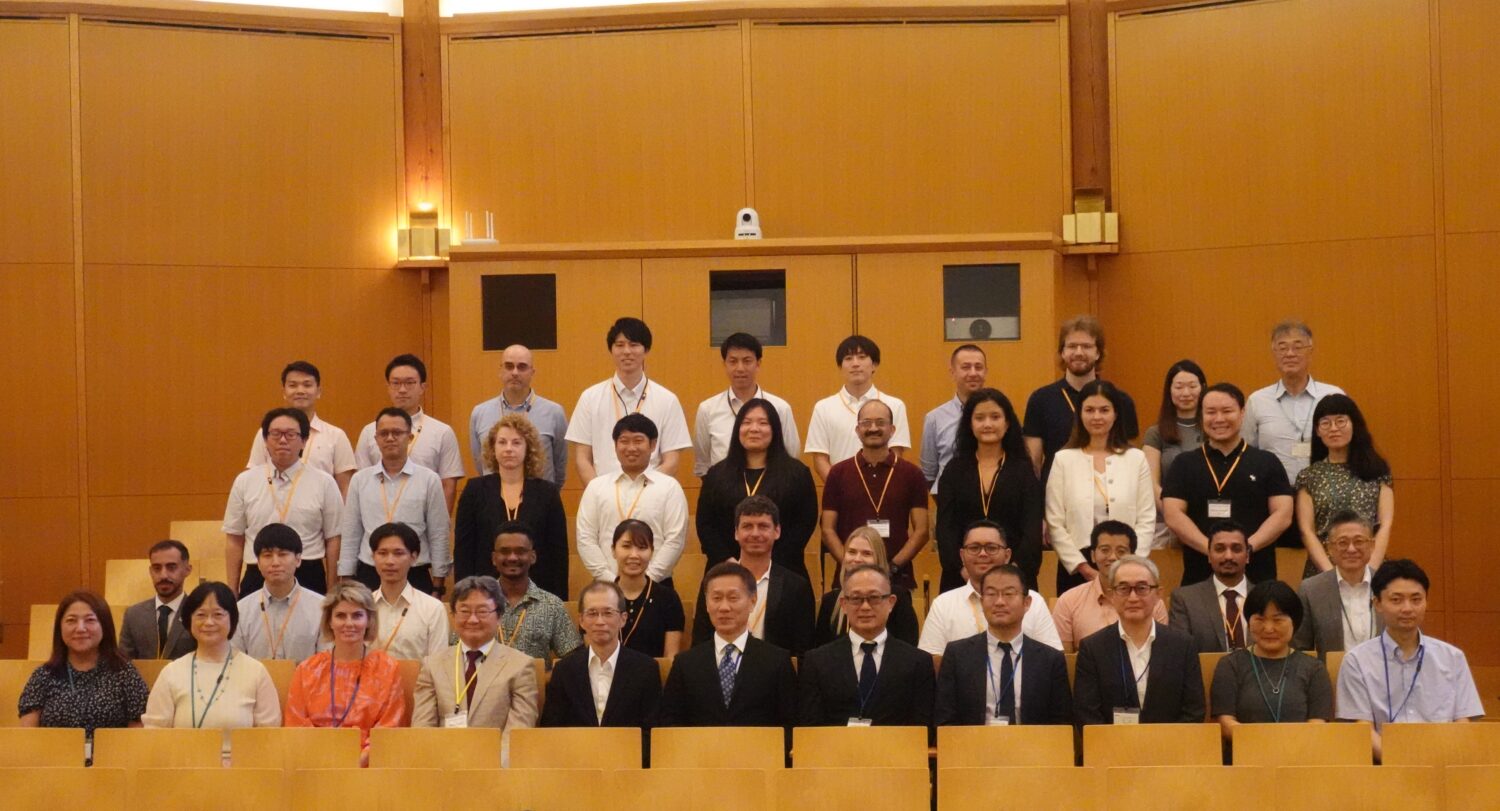Murakami next referred to Japan’s Long-Term Program for Research, Development and Utilization of Nuclear Energy, which declares that nuclear power will not only be a good option as an energy policy but also as a long-term policy for industrial growth. She then pointed out that “nuclear infrastructure cannot be built in a day” when it is suddenly found to be necessary. It is the nature of an energy policy, she said, to institute double and triple measures in anticipation of unexpected situations arising in the decades ahead. She asked the members attending the session to speak about the forces shaping nuclear development and use in their own countries.
+ +
The first speaker was Alice CAPONITI, deputy assistant secretary for Reactor Fleet and Advanced Reactor Deployment at the U.S. Department of Energy (DOE), who talked about the current situation in the United States for advanced reactors, which are crucial for a net-zero economy.
President Joe BIDEN of the United States has made global warming measures a top priority of his administration. Toward achieving domestic and global CO2 emissions goals, the DOE is actively engaged in preparing to market advanced reactor designs as soon as possible, including small modular reactors (SMRs). In that respect, the construction of new reactors is very important. The Biden Administration has set various goals, including a 50% reduction in CO2 emissions in the United States by the end of the 2020s, 100% clean energy in the U.S. energy mix by 2035, and a net-zero carbon economy by 2050. So as to hit those ambitious targets, the DOE believes it essential to secure a clean, highly reliable baseload power source such as nuclear power.
At present, nuclear power plants (NPPs) provide approximately one-fifth of total generated electricity in the United States, while, among clean energy sources, nuclear accounts for more than half of emissions-free generated electricity annually. The average capacity factor of U.S. NPPs is 92%, the highest in the world, and a higher equivalent value than for any other power source. Nuclear power is thus positioned in the United States as the largest and most reliable non-carbon power source, based on which that country supports the operation of existing large light water reactors (LWRs) and the marketing of advanced reactor designs, including SMRs and microreactors. Those are the key parts of the American strategy for combating climate change.
More specifically, the DOE has three approaches to support advanced reactor market readiness:
- carrying out foundational R&D on advanced reactor designs at the DOE’s national laboratories
- facilitating access for nuclear developers to the expertise and capabilities of its national laboratories
- forming private-public partnerships to address key technology and regulatory risks, with such partnerships bringing first-of-a-kind demonstrations to the grid within this decade.
The DOE’s “GAIN” initiative—Gateway for Accelerated Innovation in Nuclear—is one tool to support the commercialization of advanced nuclear technology. Via GAIN’s voucher program of financial support, companies gain access to the facilities and services of the national laboratories: the infrastructure, technical expertise and historical data they need to support technological development. Also, demonstration test beds and experimental infrastructure are provided at the National Reactor Innovation Center (NRIC), established by the DOE at the Idaho National Laboratory (INL) in 2019.
In terms of linking public and private efforts, the DOE has selected three advanced reactor designs, and is supporting projects to develop demonstration reactors. The first is NuScale Power’s light-water SMR, the first module of which is slated to start operation in 2029 at INL. Six nuclear power modules, with an output of 77MW each, will be connected to generate a total of 462MW.
The second project is for a sodium-cooled fast reactor called “Natrium,” being developed by TerraPower together with GE-Hitachi Nuclear Energy (GEH). A demonstration unit (345MWe) will be constructed at a retired coal-powered generation plant in Wyoming. The old thermal plant’s infrastructure will be utilized, and former employees will be hired.
The third project is for the Xe-100, a small pebble-bed high-temperature gas-cooled modular reactor being developed by X-energy, LLC. It will be the first reactor of its kind, and will be built in Washington state. It will feature a high outlet temperature, generating steam suitable for hydrogen production. As a power plant configured in a combination of four modules, it will generate 320MW of electricity.
+ +
Next, Elena POPESCU, director of the Directorate General Energy Policy and Green Deal in Romania’s Ministry of Energy, talked about her country’s strategy for nuclear development.
Southeastern Europe, including Romania, continues to be an area with certain vulnerabilities in terms of energy security. Ensuring energy security and diversification of routes and sources remain basic elements of energy policies in the region. Looking at least as far as 2030, the pace of expansion of wind, photovoltaic and other low-greenhouse-gas (low-GHG) power plants, including nuclear, is expected to rise along with increases in the cost of GHG emissions. All scenarios for the development of long-term energy systems start with the assumption that every available low-carbon technology will be used—large hydropower, renewable energies, nuclear and storage—which will be essential contributions to a diversified, decarbonized and balanced energy mix in Romania.
The European Union (EU) has set many energy and climate targets for 2030, and EU countries must establish a ten-year integrated national energy and climate plan (NECP) for the period from 2021 to 2030. Romanian objectives and targets for 2030 include lowering the level of GHG emissions in the EU’s Emissions Trading System (ETS) by 43.9% from the 2005 level, increasing the share of renewable energy in gross final energy consumption to 30.7%, and a renewable energy share of 34% in the Romanian Recovery and Resilience Plan (RRP).
Romania sees nuclear energy as a solution to the challenge of sustainable development of the energy power sector based on its availability, competitiveness and low impact on the environment. It is a strategic option for electricity generation as well as a stable component of the national energy mix. Since the Cernavodă-1 and -2 (CANDU, 700MW-class each) were connected to the grid, 170 million tons of CO2 emissions have been avoided, at an annual reduction rate of approximately 100 million tons. The share of nuclear energy in Romania is 18 to 20%, but those two units account for 33% of clean electricity. Cumulated nuclear-related turnover in 2017 was EUR590 million. Projected investments to 2030 are EUR8 billion to EUR9 billion.
Among Romania’s decarbonation targets, CO2 emissions will be reduced by 55% by the year 2030. Import dependency will be reduced from today’s 20.8% to 17.8% in 2030. To reach those targets, the Cernavodă-1 NPP will be refurbished and its life extended, and the Cernavodă-3 and -4 NPPs (CANDU, 700MW-class each)—both of whose construction was suspended in 1989 at the completion stages of 15% and 14%, respectively—will be completed by 2031. 6 SMR modules (equivalent to 462MW) will also be installed. Additionally, at Cernavodă, the Cernavodă Tritium Removal Facility (CTRF) will be constructed, where recovered tritium will be safely stored over the long term and be used for the International Thermonuclear Experimental Reactor (ITER) Project and others.
Life extension of Unit 1 is close to finalization in the current phase 1. In the next phase, an EPC (engineering, procurement and construction) contract will be concluded for implementation of the extension project, relevant authorizations will be obtained, and a final investment decision (FID) will be made. Actual refurbishment work will be carried out efficiently from December 2026 to December 2028. To complete the construction of Units 3 and 4, a contract was concluded by Energonuclear S.A., a project company of SN Nuclearelectrica S.A. (SNN), with Candu Energy Inc., a CANDU reactor manufacturer in the SNC-Lavalin Group.
In regard to SMRs, SNN concluded a teaming agreement with NuScale in the United States in November 2021, aiming at constructing NuScale’s innovative SMR in Romania. With installation of what will be the first SMR in Europe—at 462MWe installed capacity—SNN plans to avoid 4 million tons of CO2 emissions annually. The company will identify a construction site by the end of April 2022.
+ +
Speaking next was Adam GUIBOURGE-CZETWERTYNSKI, undersecretary of state at the Polish Ministry of Climate and Environment, who talked about nuclear power development and the strategy for its use in his country.
The Polish government recognizes nuclear energy as essential to its energy strategy to 2040 and for achieving net-zero CO2 emissions. It has published two key documents: “Energy Policy of Poland to 2040” and “Polish Nuclear Power Program (PNPP).” Both assume the construction of six nuclear reactors totaling 6,000MW to 9,000MW by 2043. The first unit (1,000MW to 1,500MW) will start commercial operation by 2033, and the five subsequent units will be completed at a rate of one every two years thereafter.
“Energy Policy of Poland” establishes a framework for shifting to low-carbon energy systems, and clearly states strategic decision items in selecting technologies required for such systems. Nuclear energy as a highly reliable power source is reaffirmed to be a very important part of Polish power-source components. Given that nuclear power is a dispatchable baseload power source, it is beneficial in allowing the steady building of renewable energy infrastructure.
Achieving net-zero CO2 emissions by 2050 is a very large challenge for Poland, where about 70% of total generated electricity is still provided by coal-fired plants. Still, Poland is determined to enhance power-source components while maintaining stable energy supplies and economic competitiveness. Poland’s policy is to meet about 20% of its electricity demand by nuclear power and make it a key in its decarbonization efforts.
There are three key factors in realizing the introduction of nuclear power: site selection, the business model, and the technology to be employed. As for site selection, the power company Polskie Elektrownie Jądrowe (PEJ) has identified a site at Lubiatowo-Kopalino in the Choczewo administrative district in Pomerania Province. PEJ is looking at proven technology for Generation III+ large PWRs. As for the business model, PEJ expects the firm that will be chosen as its partner to invest up to 49% in the power company, thus distributing the risks.
In March 2021, the Polish government acquired 100% of PEJ stock, and thus controls the company directly. The company recently formulated an environmental impact assessment (EIA) regarding the construction and operation of the first unit, and is now working on a site assessment report. It will select a reactor technology to be adopted for the plant and conclude a contract with a vendor. It will also conclude an EPC contract. Given that the company must also obtain approval of environmental conditions from the government, those in its nuclear power program are very busy and will continue to be so, particularly for the coming several months.
The Polish government adopted a revised “Polish Nuclear Power Program (PNPP)” in the latter half of 2020, and will, with priority, carry out development of human resources for nuclear power and communications with the public, supporting domestic industry in preparation for construction and operation of NPPs. In December 2021, the government approved a program to support local businesses and encourage domestic industry to participate in various industrial activities. Innovative nuclear-related industries are expected to be created in Poland, and up to 70% of business associated with constructing NPPs there will be by domestic industries.
+ +
Finally, Guillaume BOUYT, Director, Department for Nuclear Industry, General Directorate for Energy and Climate (DGEC), Ministry for the Ecological Transition, talked about the prospects for nuclear energy in France.
In France, 56 pressurized water reactors (PWRs) produced total electricity of 335TWh in 2019, accounting for 67% of the country’s gross generated electricity. The average age of the units was 36 years as of last year. In 2015, the Energy Transition Law for Green Growth (LTECV) was enacted, and in 2019, the Climate Energy Law (LEC) was passed to complement the LTECV. In those, France has set ambitious national medium and long-term targets for its energy transition. They include accomplishing net-zero CO2 emissions by 2050, reducing fossil fuel consumption by 40% by 2030 compared with 2012, reducing final energy consumption by 50% between 2012 and 2050, and achieving 33% renewable in its final energy consumption by 2030.
In April 2020, the Multiannual Energy Plan (MEP) to 2028 and the National Low Carbon Strategy (SNBC) were issued to complement the legal objectives of the LEC. In the first phase of the PPE (2019 to 2023), several structuring actions are provided for the future of the nuclear sector. It confirms extensions of the operating lives of nuclear reactors beyond forty years and reaffirms the nuclear fuel processing strategy.
At the same time, in October 2021, RTE (the national transmission system operator), as directed by the government, issued 6 scenarios for meeting electricity needs on a long-term basis while ensuring that the French electric mix is fully decarbonized. RTE’s conclusions, based on its assessments of costs and risks, include the following statements: “Completely eliminating nuclear presents a significant risk of not achieving the French objective of decarbonizing the electricity mix by 2050,” and “Building new nuclear reactors appears relevant from an economic point of view.”
Under those circumstances, French President Emmanuel MACRON announced the launch of a new program in November 2021 to build nuclear reactors in addition to the continued massive development of renewable energy sources. In February 2022, he expressed his wish that six Advanced European Pressurized Water Reactors (EPR2s) be built in France, and that studies be initiated for the construction of eight additional EPR2s. He also hoped that “no operating reactor be decommissioned if it still has the capacity to produce electricity efficiently, as long as the highest standards of safety are ensured.”
The French trajectory in terms of energy and climate policy is subject to a regularly revised framework. Work based on broad consultation has been ongoing since the autumn of 2021 with a view to developing a French energy and climate strategy for the second PPE period (2024 to 2028). Discussions in the French Parliament are scheduled for the summer of next year regarding a law incorporating new policies. The upcoming revision should provide more details on the construction of new nuclear reactors in France.
Meanwhile, in the nuclear industry, Électricité de France S.A. (EDF) has been developing European Pressurized Water SMRs—the “Nuward” project—and plans to deploy them by 2040 to complete the French energy mix. In the project, two 170-MW reactors are housed in a single nuclear building, with passive safety systems able to respond to various accident scenarios.
In September 2020, the French government set out its France Relance recovery plan to support the nuclear industry, budgeted as follows: EUR100 million for the modernization and relocation of industrial capacities, EUR200 million for nuclear R&D, and EUR50m for the preliminary design of the “Nuward” French SMR.
In October 2021, President Macron presented a major new investment plan for the future, called France 2030, presenting ten objectives for the betterment of peoples’ lives and productive activities by 2030. The plan covers various important sectors, including energy. One objective of the plan is to promote the emergence in France of small and other innovative nuclear reactors, for which, EUR1,000 million of public investment has been announced.



